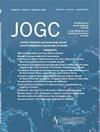妊娠早期出血患者急诊:不同模型预测妊娠成功的比较
IF 2
Q2 OBSTETRICS & GYNECOLOGY
引用次数: 0
摘要
目的:妊娠早期出血是产科急诊科(ED)常见的表现,其结局难以预测。我们开发并比较了随机森林机器学习(活产风险评分[LiBRisk])和nomogram模型,用于预测在加拿大三家急诊科就诊的妊娠早期出血妇女的活产机会。方法:采用结构化问卷调查、图表回顾和管理数据库对200例妊娠早期出血患者进行前瞻性数据收集。我们通过多变量逻辑回归分析开发了变量的nomogram。LiBRisk是使用Shapley可变重要性云(ShapleyVIC)来构建一个简单的基于点的临床风险评分系统。结果:总体而言,115例(55%)患者流产。我们排除了不能提高模型性能的阴道出血持续时间和疼痛评分,并使用8个最重要的变量(β-HCG水平、年龄、胎龄、妊娠、胎次、子宫大小与胎龄的比例、腹部痉挛和既往自然流产次数)构建了LiBRisk。所有10个变量均包含在nomogram中。LiBRisk在检验集和验证集的AUC分别为0.913(95%可信区间[CI], 0.907-0.919)和0.900 (95% CI, 0.887-0.913)。检验集和验证集的c指数分别为0.720 (95% CI, 0.714-0.726)和0.860 (95% CI, 0.853-0.867)。LiBRisk在所有指标上都优于nomogram。结论:我们开发并比较了LiBRisk和nomogram模型,用于确定妊娠早期出现出血的ED患者最终妊娠成功/失败的概率。LiBRisk更为简洁,仅包含8个变量,在所有指标上都优于nomogram。鉴于这些有希望的结果,进一步的测试似乎是有必要的。本文章由计算机程序翻译,如有差异,请以英文原文为准。
Patients Presenting to the Emergency Department with Bleeding in Early Pregnancy: Comparing Different Models to Predict Pregnancy Success
Objectives
Bleeding in early pregnancy is a common obstetric presentation in the emergency department (ED), and the outcome is difficult to predict. We developed and compared random forest machine learning (Live Birth Risk Score [LiBRisk]) and nomogram models for predicting the likelihood of a live birth among women presenting at 3 Canadian EDs with bleeding in early pregnancy.
Methods
Data were prospectively collected on 200 patients with bleeding in early pregnancy using a structured questionnaire, medical record review, and administrative databases. We developed the nomogram with variables selected via multivariable logistic regression analysis. LiBRisk was built using the Shapley variable importance cloud (ShapleyVIC) to derive a simple point-based clinical risk scoring system.
Results
Overall, 115 (55%) patients experienced a miscarriage. We excluded duration of vaginal bleeding and pain score, which did not enhance model performance, and constructed LiBRisk with the 8 most important variables (β-human chorionic gonadotrophin level, age, gestational age, gravidity, parity, proportionality of uterine size to gestational age, abdominal cramping, and number of prior spontaneous abortions). All 10 variables were included in the nomogram. The area under the receiver operating characteristic curve of LiBRisk in the test and validation sets were 0.913 (95% CI 0.907−0.919) and 0.900 (95% CI 0.887−0.913), respectively. The C-index of the nomogram was 0.720 (95% CI 0.714−0.726) and 0.860 (95% CI 0.853−0.867) in the test and validation sets, respectively. LiBRisk outperformed the nomogram in all metrics.
Conclusions
We developed and compared LiBRisk and nomogram models for determining the probability of eventual pregnancy success/failure in women presenting to the ED with bleeding in early pregnancy. LiBRisk was more parsimonious, incorporating only 8 variables, and outperformed the nomogram in all metrics. Given these promising results, further testing seems warranted.
求助全文
通过发布文献求助,成功后即可免费获取论文全文。
去求助
来源期刊

Journal of obstetrics and gynaecology Canada
OBSTETRICS & GYNECOLOGY-
CiteScore
3.30
自引率
5.60%
发文量
302
审稿时长
32 days
期刊介绍:
Journal of Obstetrics and Gynaecology Canada (JOGC) is Canada"s peer-reviewed journal of obstetrics, gynaecology, and women"s health. Each monthly issue contains original research articles, reviews, case reports, commentaries, and editorials on all aspects of reproductive health. JOGC is the original publication source of evidence-based clinical guidelines, committee opinions, and policy statements that derive from standing or ad hoc committees of the Society of Obstetricians and Gynaecologists of Canada. JOGC is included in the National Library of Medicine"s MEDLINE database, and abstracts from JOGC are accessible on PubMed.
 求助内容:
求助内容: 应助结果提醒方式:
应助结果提醒方式:


